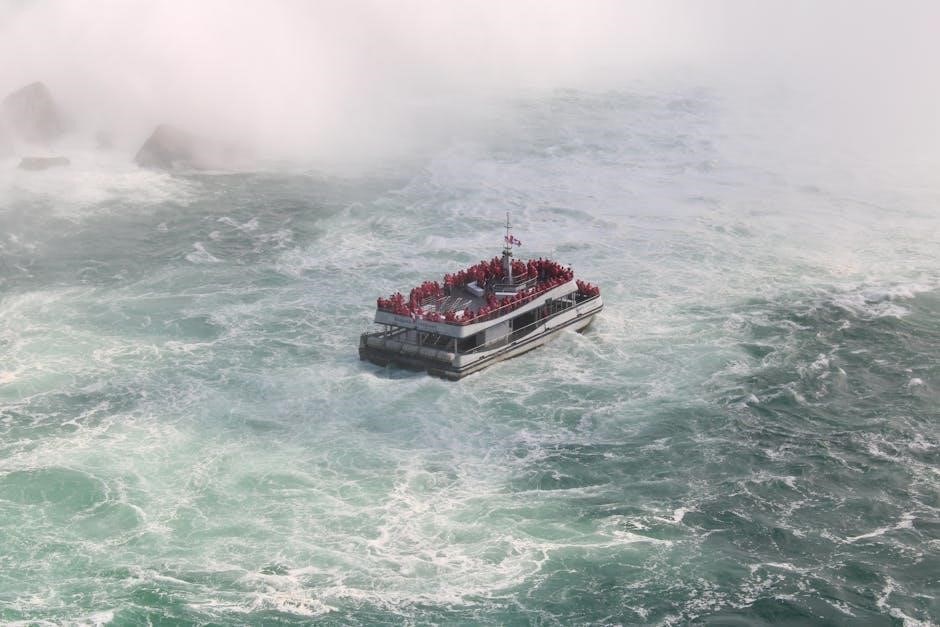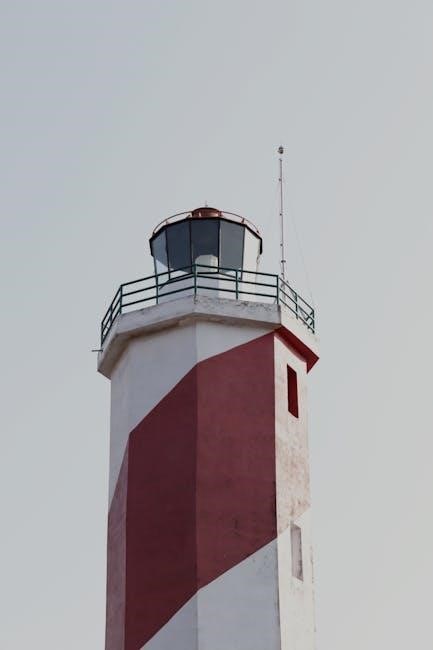Boat Trailer Guides: A Comprehensive Overview
Boat trailer guides are essential accessories designed to simplify the process of loading and unloading your boat. They help align the boat correctly onto the trailer, especially in challenging conditions. These guides reduce the risk of damage to both the boat and the trailer during these operations.
Boat trailer guides are indispensable tools for boat owners, designed to make the often-challenging task of loading and unloading a boat onto a trailer significantly easier and safer. These guides act as visual and physical aids, helping to center the boat correctly on the trailer, especially in adverse conditions such as windy days, strong currents, or murky water.
The primary function of boat trailer guides is to prevent damage to both the boat and the trailer. Without proper guidance, the boat can collide with the trailer’s frame, rollers, or brackets, leading to costly repairs. Guides help avoid misalignment, ensuring the boat sits properly on the bunks or rollers, distributing weight evenly and providing secure support during transport.
There are different types of boat trailer guides available, each designed to suit various boat sizes, hull types, and trailer configurations. These include bunk-style guides, roller-style guides, and post-style guides. Each type offers unique advantages, making it important for boat owners to choose the guide that best fits their specific needs and boating habits.
Benefits of Using Boat Trailer Guides
Boat trailer guides provide numerous benefits, making them a worthwhile investment for any boat owner. One of the primary advantages is the ease and convenience they offer during boat loading and unloading. By providing a clear visual reference, guides simplify the process, especially in less-than-ideal conditions such as strong winds or murky water.
These guides play a crucial role in protecting both the boat and the trailer from potential damage. They prevent the boat from colliding with the trailer’s frame, rollers, or other components, reducing the risk of scratches, dents, and more severe structural damage. This protection extends the lifespan of both the boat and the trailer, saving boat owners money on repairs.
Boat trailer guides enhance safety during the loading and unloading process. By ensuring the boat is properly aligned on the trailer, they prevent unbalanced loads that could lead to accidents. They also help to center your boat on the trailer.
Types of Boat Trailer Guides
Boat trailer guides come in several designs, each offering unique advantages for different boat types and trailering situations. Understanding the different types of guides can help boat owners select the most suitable option for their needs.
One common type is bunk-style guides, featuring wooden boards covered in marine-grade carpet. These guides run along the length of the trailer and provide durable support for the boat’s hull, making them ideal for larger boats.
Another popular option is roller-style guides, which use rollers to assist in loading and unloading. These guides reduce friction and make it easier to move the boat onto the trailer, particularly in shallow water.
Post-style guides, typically made of metal or PVC, sit on the rear of the trailer and act as visual markers. They help boaters align their boat with the trailer, especially when visibility is poor.
Bunk-Style Guides
Bunk-style guides are a popular choice for boat trailers, known for their durability and effectiveness in supporting and aligning boats during loading and transport. These guides typically consist of wooden boards covered in marine-grade carpet, providing a cushioned surface that protects the boat’s hull from scratches and abrasions.
The carpeted bunks run along the length of the trailer, offering continuous support to the boat and ensuring it sits securely. Bunk-style guides are particularly well-suited for larger, heavier boats, as they distribute the boat’s weight evenly across the trailer frame.
Installation usually involves attaching brackets to the trailer frame and securing the wooden bunks to these brackets. Proper alignment is crucial to ensure the boat loads straight and rests properly on the bunks. Regular maintenance, including inspecting and replacing worn carpet, helps prolong the life of these guides.
Roller-Style Guides
Roller-style guides offer a different approach to boat alignment and loading, utilizing a series of rollers to facilitate the boat’s movement onto the trailer. These rollers are typically made of durable materials like rubber or polyurethane, designed to withstand the harsh marine environment and provide smooth, effortless loading.
Unlike bunk-style guides, roller guides minimize friction, allowing the boat to glide onto the trailer with ease. This is especially beneficial for heavier boats or in situations where the launch ramp has a shallow angle. The rollers can be adjusted to accommodate different hull shapes and sizes, providing a customized fit.
Installation of roller-style guides may involve mounting brackets to the trailer frame or tongue. Regular inspection and maintenance are important to ensure the rollers are in good condition and rotate freely. While roller guides can be more expensive than bunk guides, their ease of use and reduced friction make them a popular choice for many boaters.
Post-Style Guides

Post-style guides, also known as guide-ons, are vertical posts that extend upwards from the trailer, typically positioned near the rear. These posts serve as visual cues, helping boaters align their boat with the trailer, particularly in murky water or when visibility is limited. They are especially useful on steep ramps where judging distance can be challenging.
These guides are constructed from materials like galvanized steel or PVC, offering durability and resistance to corrosion. The height of the posts is adjustable to accommodate different boat sizes and trailer configurations. Some models feature reflective tape or lighted tips for enhanced visibility during low-light conditions.
Installation usually involves mounting brackets to the trailer frame. While post-style guides don’t physically guide the boat onto the trailer like bunk or roller guides, they provide a clear visual reference, making the loading process easier and safer, preventing costly repairs from accidental collisions with the trailer frame. They are a simple yet effective solution for many boaters.
Materials Used in Boat Trailer Guides

Boat trailer guides are manufactured using a variety of materials, each chosen for its specific properties and suitability for marine environments. Galvanized steel is a common choice due to its strength and resistance to corrosion. It’s often used for the framework and mounting hardware, providing a robust structure that can withstand the stresses of repeated use.
PVC is another popular material, particularly for guide posts and covers. PVC is lightweight, durable, and highly resistant to water damage, making it ideal for components that are constantly exposed to moisture. Some guides incorporate carpeted wood bunks, offering a soft surface that protects the boat’s hull from scratches and abrasions during loading and transport.
Stainless steel is used in premium guides, offering exceptional corrosion resistance, especially in saltwater environments. Polymer materials are increasingly common, providing a combination of strength, flexibility, and UV resistance. The selection of materials depends on the guide’s design, intended use, and the level of protection required for the boat and trailer.

Factors to Consider When Choosing Boat Trailer Guides

Selecting the right boat trailer guides involves considering several crucial factors to ensure optimal performance and protection. The size and type of your boat are paramount; larger boats require sturdier, taller guides. The trailer’s dimensions and frame construction dictate the compatibility and mounting options available.
Consider the typical launching conditions, such as water depth and ramp steepness, as these influence the required guide height and adjustability. The materials used in the guides are also vital; saltwater environments necessitate corrosion-resistant materials like galvanized or stainless steel. Ease of installation is another practical consideration, with some guides requiring drilling and others offering bolt-on solutions.
Assess the guides’ visibility, especially for night or murky water launches. Durability and maintenance requirements are also important, ensuring the guides withstand regular use and environmental exposure. Finally, budget constraints play a role, balancing cost with desired features and quality. Considering these factors ensures you choose boat trailer guides that meet your specific needs and provide reliable performance.
Installation of Boat Trailer Guides
Installing boat trailer guides generally involves a straightforward process, but precision is key for optimal performance. Begin by gathering necessary tools, including wrenches, drills, measuring tape, and safety glasses. Consult the guide’s instructions for specific hardware and placement recommendations. Start by positioning the guides on the trailer frame, ensuring they align with the boat’s hull when loaded.
Most guides attach using U-bolts or mounting brackets. If drilling is required, carefully mark the hole locations and use a drill bit appropriate for the trailer frame material. Securely fasten the guides, ensuring they are level and properly spaced. Double-check all connections to prevent loosening during transit. For adjustable guides, fine-tune the height and width to match the boat’s dimensions.
Test the setup by loading the boat onto the trailer, observing how the guides direct the hull. Make any necessary adjustments to ensure smooth, centered loading. Finally, inspect all hardware for tightness and apply a corrosion-resistant coating to any exposed metal. Proper installation ensures the guides function effectively, protecting your boat and trailer during every launch.
Maintenance and Care of Boat Trailer Guides
Regular maintenance is crucial to prolonging the life and effectiveness of boat trailer guides. After each use, rinse the guides with fresh water to remove salt, dirt, and debris, which can cause corrosion. Inspect the guides for any signs of damage, such as cracks, bends, or loose hardware. Tighten any loose bolts or nuts to prevent further issues during transit.
For carpeted bunk-style guides, check the carpet for tears or wear. Replace the carpet if necessary to protect the boat’s hull. Regularly lubricate any moving parts, such as rollers or swivels, with a marine-grade grease to ensure smooth operation. Periodically inspect the guide posts or frames for rust or corrosion.
Apply a rust inhibitor or protective coating to prevent further damage; Store the trailer in a dry, covered location to minimize exposure to the elements. By following these simple maintenance steps, you can keep your boat trailer guides in optimal condition, ensuring they continue to provide reliable support and protection for your boat season after season. Neglecting maintenance can lead to premature wear and costly replacements.
Common Problems and Solutions
Several common issues can arise with boat trailer guides. One frequent problem is misalignment, causing the boat to load unevenly. The solution involves adjusting the guide’s position to ensure proper alignment with the boat’s hull. Another issue is corrosion, especially in saltwater environments. Regular rinsing with fresh water and application of rust inhibitors can prevent this. If corrosion is already present, remove it with a wire brush and apply a protective coating.
Worn-out carpet on bunk-style guides is another common problem. Replace the carpet promptly to avoid scratching the boat’s hull. Loose or broken hardware can also occur; Regularly inspect and tighten all bolts and nuts. Replace any damaged hardware immediately. Finally, guide posts may bend or break due to impact. Reinforce the posts with additional supports or replace them with sturdier materials.
By addressing these common problems promptly, boat owners can maintain the effectiveness and longevity of their trailer guides, ensuring safe and easy boat loading and unloading.
Top Brands and Products on the Market
Several brands stand out in the boat trailer guide market, offering a variety of reliable and innovative products. CE Smith is known for its durable bunk-style guides and roller systems, providing excellent support and ease of use. Tie Down Engineering offers premium polymer guide-ons designed to withstand harsh marine conditions, ensuring long-lasting performance and hull protection. VEVOR provides adjustable trailer guide poles, offering versatility and ease of installation for various boat and trailer types.
For those seeking a unique solution, Bullseye Quick Load offers a patented system designed for precise boat centering on the trailer. Venture Trailers provides a wide selection of load guides to make boat launching and loading a breeze. JY PERFORMANCE offers rustproof galvanized steel trailer guide-ons, providing durability and value. When selecting boat trailer guides, consider factors such as boat size, trailer type, and the specific needs of your boating environment to choose the best product for your needs; These top brands offer options to suit various requirements and budgets.
Cost Considerations
The cost of boat trailer guides can vary significantly depending on the type, materials, and brand. Basic bunk-style guides are generally the most affordable, with prices ranging from $50 to $150. Roller-style guides tend to be slightly more expensive, typically costing between $100 and $300, depending on the quality of the rollers and the complexity of the mounting system. Post-style guides can range from $80 to $250, depending on the height and material of the posts.
Premium materials, such as stainless steel or high-grade polymers, will increase the price. Additional features like adjustable height or integrated lighting can also add to the cost. When budgeting for boat trailer guides, consider the long-term benefits of investing in a higher-quality system. While cheaper options may seem appealing upfront, they may not offer the same level of durability and protection as more expensive alternatives; Factor in the potential cost savings from preventing damage to your boat and trailer when making your decision.
Enhancing Boat Trailering with Guides
Choosing the right guides depends on your boat type, trailer configuration, and personal preferences. Consider the materials, adjustability, and ease of installation when making your selection. Regular maintenance will ensure that your guides remain in optimal condition, providing years of reliable service. Ultimately, boat trailer guides enhance the overall trailering experience, making it safer, more efficient, and less stressful. With the right guides in place, you can confidently embark on your boating adventures, knowing that your vessel is well-protected during transport.
